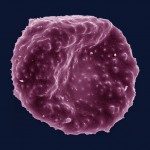Link to Pubmed [PMID] – 29690890
Malar. J. 2018 Apr;17(1):175
BACKGROUND: Given the risk of artemisinin resistance spreading from the Greater Mekong sub-region, prospective monitoring in sub-Saharan Africa should be expedited. Molecular biology techniques used for monitoring rely on the detection of k13 validated mutants by using PCR and Sanger sequencing approach, usually not available in malaria endemic areas.
METHODS: A semi-automated workflow based on the easyMAG platform and the Argene Solution (bioMérieux, Marcy l’Etoile, France) as a field-based surveillance tool operable at national level was developed in four steps. Clinical and analytical performances of this tool detecting five of the most frequent and validated k13 mutants (Y493H, I543T, R539T, F446I and C580Y) from dried blood spots (DBS) were compared to the gold standard approach (PCR and Sanger sequencing).
RESULTS: By using the ARMS (amplification-refractory mutation system) strategy, the best multiplexing options were found in 3 separate real-time PCR duplexes (IC as internal control/I543T, C580Y/Y493H and F446I/R539T) with limits of detection ranging from 50 (C580Y) to 6.25 parasites/µL (Y493H). In field conditions, using 642 clinical DBS (from symptomatic patients and asymptomatic individuals) collected from Cambodia, Myanmar and Africa (Chad), the overall sensitivity and specificity of the K13 bMx prototype assay developed by bioMérieux were ≥ 90%. Areas under the ROC curves were estimated to be > 0.90 for all k13 mutants in samples from symptomatic patients.
CONCLUSION: The K13 ready-to-use bMx prototype assay, considered by the end-users as a user-friendly assay to perform (in shorter time than the K13 reference assay) and easy to interpret, was found to require less budget planning and had fewer logistical constraints. Its excellent performance qualifies the prototype as a reliable screening tool usable in malaria endemic countries recognized to be at risk of emergence or spread of validated k13 mutants. Additional multi-site studies are needed to evaluate the performances of the K13 bMx prototype assay in different epidemiological contexts such as Africa, India, or South America.

